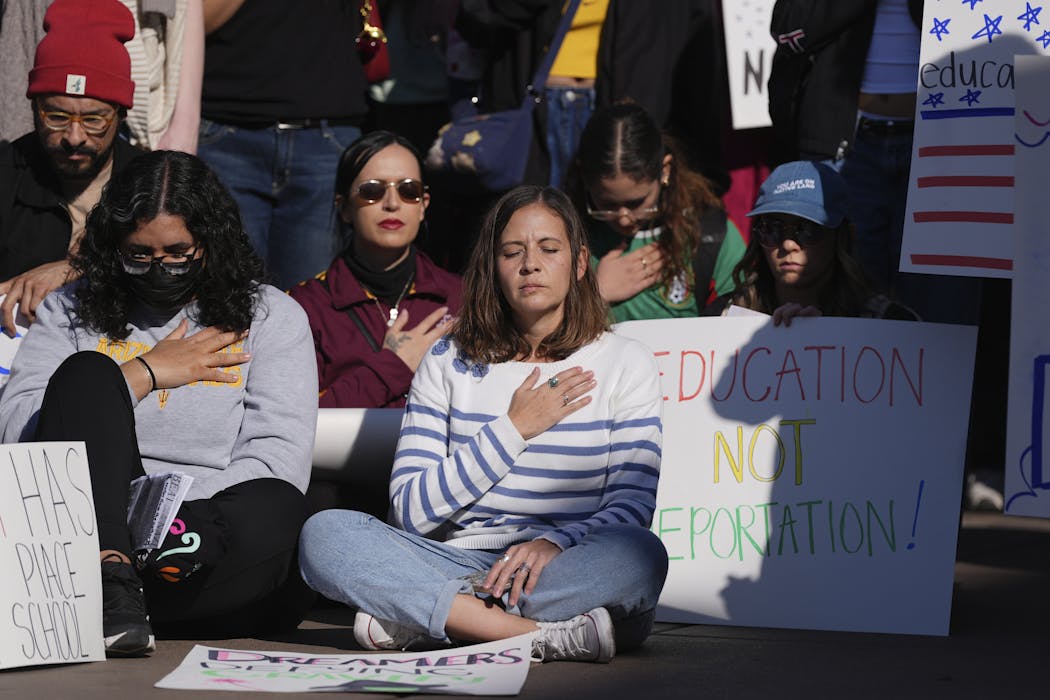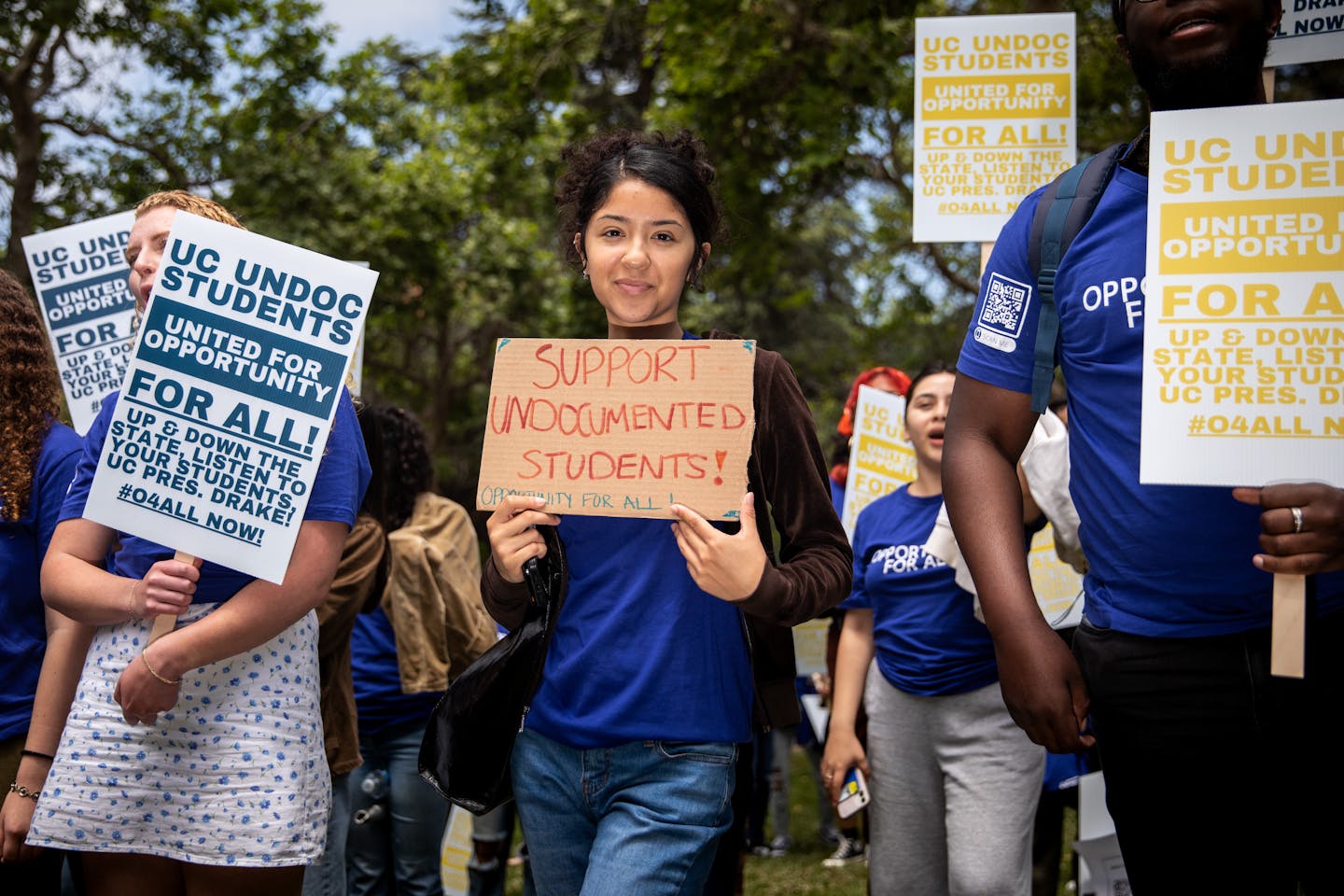
The Trump administration is upending norms and policies across the American educational system. One of the many groups facing uncertainty are prospective and current students living in the country without legal authorization.
For those students, applying to and attending college has long been a complicated, patchwork process that varies greatly across states.
In August 2025, the Department of Justice sued Oklahoma for a state law that allowed Oklahoma students living in the country without legal permission to pay a lower tuition rate that is guaranteed to in-state residents.
The Department of Justice also sued Kentucky, Texas and Minnesota over the summer on the same grounds.
Texas, Kentucky and Oklahoma have all announced they will no longer offer in-state tuition to students who are living in the U.S. illegally. Minnesota is currently challenging the Justice Department’s lawsuit.
Amy Lieberman, the education editor at The Conversation U.S., spoke with Vanessa Delgado, a scholar of Latino families and their educational experiences, to understand the higher education pathways for students living in the U.S. without legal authorization – and how the Trump administration is affecting their options.

How large is the population of students who are living in the U.S. without legal authorization?
There are 408,000 undocumented students enrolled in U.S. colleges and universities – that’s about 2% of the entire U.S. college population.
California and Texas have the greatest number, with about 21% of all undocumented college students living in California and 14% in Texas. Those numbers are likely to be an underestimate, as there are no official surveys that track this information.
We don’t have strong data on the high school graduation rates of college students who are not living in the U.S. legally. The best estimates suggest that about 5% to 10% of all undocumented high schoolers go off to college.
Research shows that legal battles over Deferred Action for Childhood Arrivals, or DACA, have contributed to a drop in college enrollment. DACA is a federal immigration policy that allows some immigrants who came to the U.S. as young children to receive temporary protection from deportation and to get work permits.
College graduation rates are shaped by a number of factors, including the state an immigrant student lives in and whether they can receive in-state tuition and state-based financial aid. Other important factors are whether there are undocumented student resource centers and supportive mentors on campus.
How is attending college different for students without legal authorization?
Undocumented high school students thinking about college may be unaware of their legal and financial options. Undocumented students frequently receive incorrect information about college options – and sometimes they do not want to disclose their immigration status to a school counselor.
Where an undocumented student lives determines whether they can afford to pay for college, or in some cases whether they can attend at all. Undocumented students cannot receive any federal student aid, regardless of where they live, because you need to be an American citizen to receive this aid. Financial help is critical for many students, including immigrants, as most students receive some financial aid to pay for college.
There are 22 states, as well as Washington, that allow undocumented students to pay in-state tuition. In addition, undocumented high schoolers are eligible for state-based financial aid in 14 states.
Conversely, 10 states, like Wisconsin and Oklahoma, have enacted laws to block undocumented students from receiving in-state tuition.
Can these students receive merit-based scholarships?
That depends. Some scholarship programs require a lawful immigration status. Some scholarships might require students to be eligible for Pell Grants, meaning they also need lawful immigration status. Other programs, like public colleges in California and Washington state, have merit-based scholarships that undocumented students can apply for. Several national private scholarships are also available for undocumented students.
Are there some cases where these students simply cannot legally attend college?
There are three states – Georgia, Alabama and South Carolina – where undocumented students cannot apply to most public universities. For these states, the board of regents prohibits admission for undocumented students.
In Washington state, undocumented students who are residents can apply for state-based financial aid. Other states, like California, provide similar forms of aid.
What are other practical questions prospective students need to consider?
First, there’s the cost of going to college. Undocumented students are much more likely than citizens to be living in poverty. And in general, college tuition is rising. If you do not have access to resources, such as in-state tuition and state-based financial aid, the cost will likely be a prohibitive factor.
Then there is the question of what comes after college. Generally, without a lawful immigration status, undocumented students struggle to find work. Some states, like California and Washington, have enacted policies to remove barriers for professional licenses, letting undocumented immigrants still pursue different career paths.
How is Trump changing the education landscape for immigrant families?
The Trump administration’s aggressive enforcement of immigration policy is prompting more undocumented students to consider whether they need to stay close to home, as many fear that they or their family members will be deported.
Many undocumented students face significant family obligations at home, as I find in my research. This can dissuade them from going far from home, or even from going to school at all.
I know students who are now contemplating taking a year of absence, or dropping out altogether. I also know students who cannot concentrate on school work, because they are anxious about whether their loved ones will be detained. Many also have younger siblings and feel the pressure of stepping into a guardian role.
Texas is an example of a place where undocumented students are particularly under stress. It was one of the first states to provide in-state tuition for undocumented students. In June 2025, the state rescinded the policy.
Now, undocumented college students in Texas need to pay out-of-state tuition costs, even if they have paid in-state so far. That roughly doubles the cost of annual tuition. Students and staff on the ground are scrambling to figure how to make sense of this abrupt policy shift. Similar rollbacks have happened in Florida and other states, and all of these measures are making it more challenging for undocumented students to consider pursing higher education.
This article is republished from The Conversation, a nonprofit, independent news organization bringing you facts and trustworthy analysis to help you make sense of our complex world. It was written by: Vanessa Delgado, Washington State University
Read more:
- Who are immigrants to the US, where do they come from and where do they live?
- Migrants often can’t access US health care until they are critically ill – here are some of the barriers they face
- Here’s how undocumented students are able to enroll at American universities
Vanessa Delgado does not work for, consult, own shares in or receive funding from any company or organization that would benefit from this article, and has disclosed no relevant affiliations beyond their academic appointment.


 The Conversation
The Conversation
 Raw Story
Raw Story Reuters US Top
Reuters US Top Reuters US Domestic
Reuters US Domestic AlterNet
AlterNet Daily Kos
Daily Kos KTRE Sports
KTRE Sports